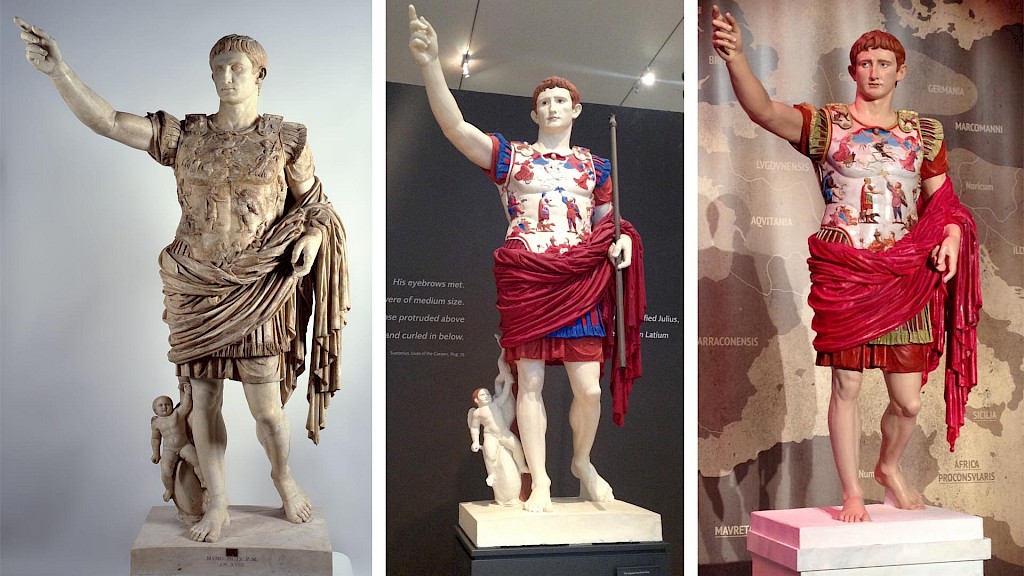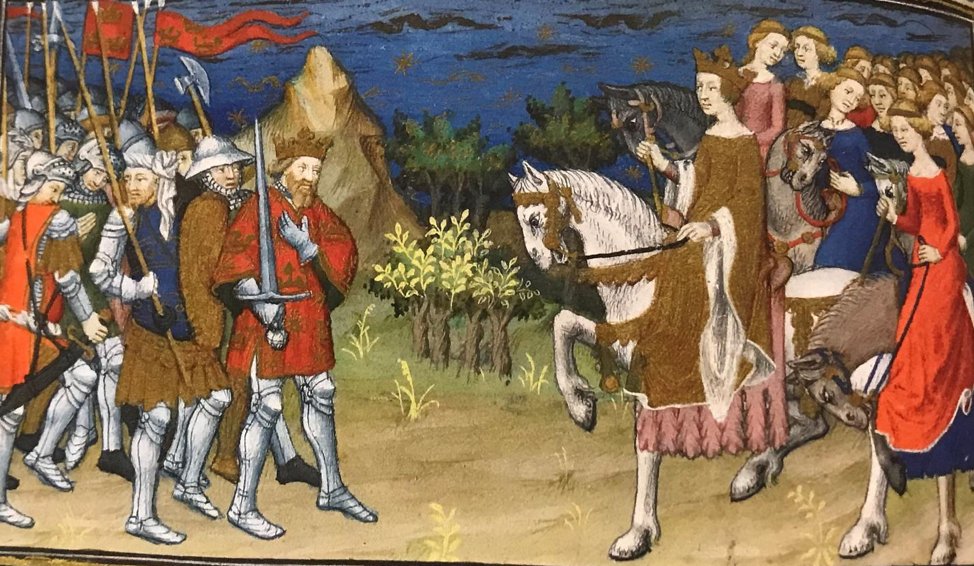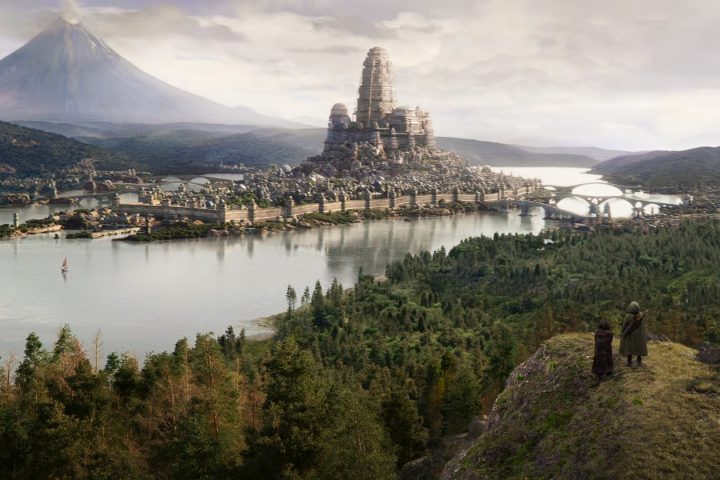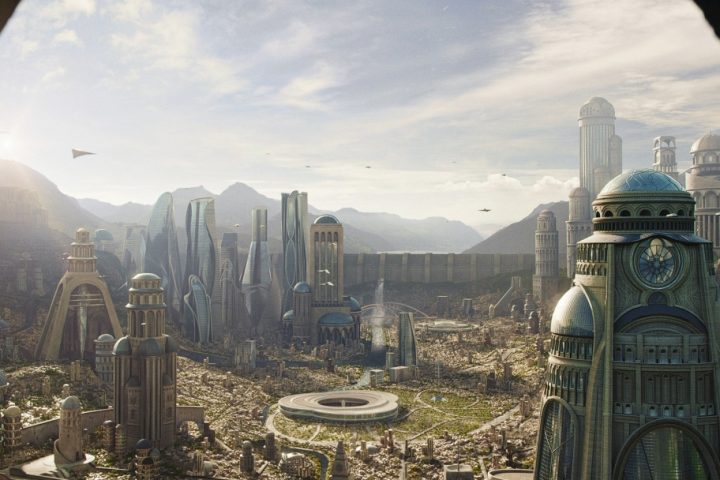Anachronisms are not a recent invention, the picture above this blog is an example of a medieval one and comes from an illustration of the Alexander Romance. It is supposed to depict Alexander the Great and his army meeting a group of Amazons. However, Alexander’s men are clearly equipped in the style of Western Europe of the High Middle Ages and the Amazons are dressed as ladies-in-waiting from the same era.
However, in today’s post I want to talk about some modern anachronisms that color the way we think of the past. This, in turn, influences how we imagine more fantastical worlds.
Gas Torches
My first subject is also the inspiration for this post and comes by way of this youtube video. I won’t go over all his points, but to summarize there was a D&D scenario where in the book it was detailed that the castle was lit day and night by torches. Again the video goes into why that doesn’t work so I’ll concentrate on what was used and why we so often see torches in movies and series showing the inside of a castle.
It’s not exactly torches we see, however, but metal sconces that burn with a fairly bright and clean flame. They look historic and you do need enough light to film by so it makes sense from that perspective. But those sconces are actually gas-fed, that’s why they burn so clean.
There are good reasons they use these rather than candles or oil lamps and the main one is safety. They don’t produce soot or smoke that might endanger the health of the actors and crew. The fuel can also be turned off very quickly and from a central location if something does go wrong.
But whether it was a castle, a palace, or a small hut, none of these were lit that way in pre-modern times. The most common light source was the sun and when that went down you couldn’t work. The hearth might offer some light and warmth as you enjoyed your evening dinner or if you were wealthy enough you could use a few candles. But even in those cases, you would only light the places where people were and put out a fire or take it with you if it was a candle.
Because fire was a hazard and plenty of buildings and even entire cities did burn. Famously, there was Rome in 64 CE and London burned down twice in less than a century.
Archer Fire
We see it in many a movie and even in my favorite fantasy series The Wheel of Time it makes an appearance. A group of archers lined up, waiting for the command before they unleash a volley of arrows at the enemy. Waves of arrows, often raining down on the enemy.
Except that’s not how that worked. This tactic is from the gunpowder age where armies armed with muskets would line up and try to concentrate the shock of the massed musketry. I don’t know when this got projected back into the pre-gunpowder age. It might be early Hollywood, might even be from the Victorian age when the study of history became a scientific field.
Our first clue is in the word all too often yelled at the archers to unleash their storm of arrows, “Fire!”. This is obviously not something that makes sense in archery since bows don’t do well near fire. In Wheel of Time at least Robert Jordan replaced it with the more sensible word “Loose!” but it is the whole tactic that falls apart under scrutiny.
Having someone call out the steps such as putting an arrow to the string or even aiming can’t work because people will take more or less time to do that and you can’t have people waiting around with their warbow drawn for more than a few seconds before they have to release. And aiming is done as part of the draw.
There is of course a lot of debate still on how bows were employed on the medieval battlefield, but I’m relying on Mike Loades’ excellent War Bows for this more likely description of medieval archery.
To start of, archers were mostly dispersed among soldiers wielding other weapons such as spears, halberds, and other melee weapons. We come across exceptions, mostly mercenary units hired specifically because they had an expertise with the weapon. Cretan archers are one example, the Genoese Crossbowmen that were very poorly used at Crecy are another.
Now the archers wouldn’t loose their arrows from long distance usually, but hold until the enemy was close enough that an arrow on a flat trajectory could reach them. Aiming for gaps or weak spots in the armor of either the man or the horse (knights armored their horses, mostly with cloth armor) the archers operated more like snipers than musketeers.
Motorcycles on Four Legs
Another staple of fiction is the chase on horseback or the transition shot where we see our heroes gallop with their horses across a large field or a long stretch of road. But this too is not entirely possible. A horse can sustain a gallop for a mile or two before they need a long rest to recover their stamina. So while the immediate chase could indeed be conducted at a gallop, anything longer will be done at a trot.
This makes sense when you consider that horses are not machines but living beings. They get tired, they get hungry, and thirsty. They’ll injure themselves if they strain themselves too much and get sick if not taken proper care off. This is why just about any cavalry force made use of remounts. They would switch from one horse to the other to let the other rest and if one horse got injured due to an accident or the like, they still had another to go into battle with.
Another consideration is that your average warhorse can’t survive on grass alone and require grains like oats or barley to keep up their strength. The Mongols hardy horses were an exception to this but these steppe horses are a lot smaller than what warriors in more sedentary civilizations used. This is probably one reason why steppe nomads preferred mounted archery over something like a lance charge. The relative size of the horses aren’t much of a factor in ranged combat.
As horses are living beings they also can’t just be parked like modern vehicles can. They require shelter from the elements, warmth lest they catch a cold, and they’ll piss or shit when nature calls. I don’t think the hero’s horse has ever farted at a dramatically inopportune moment, but in reality this could quite easily happen and probably did happen at some point while a king or general tried to address his troops.
Riotous Rome
Looking at modern capitals such as Berlin, London, or Washington DC, we can see the influence of the Neoclassical style that sought to emulate the greatness that was Rome. But the Rome of our imagination was not that white in every sense of the word.
The ancient people loved color as much as we did and painted much of what we now only know as bare stone. Both buildings and statues would have been covered in paint and it could get quite garish to our modern sensibilities.

This was true not only for the Romans, but also the Greeks as well as the ancient Egyptians to name a few. Today this looks strange because we’re used to seeing bare stone statues and consider that how it should be. But this was not true for the people that made the art that inspired later generations.
So when we see ruins in a documentary or a statue in a museum, we should keep in mind that we’re only seeing what’s left and not how the creators intended those works to be seen.
A Final Thought
So these are just some anachronisms that I could think of. I had thought of one or two more, but I’ll save them and see if I can’t come up with more for a second post if there’s interest in it.
Let me know your thoughts about these in the comments and feel free to share your own pet peeves when it comes to how history is depicted in fiction.



